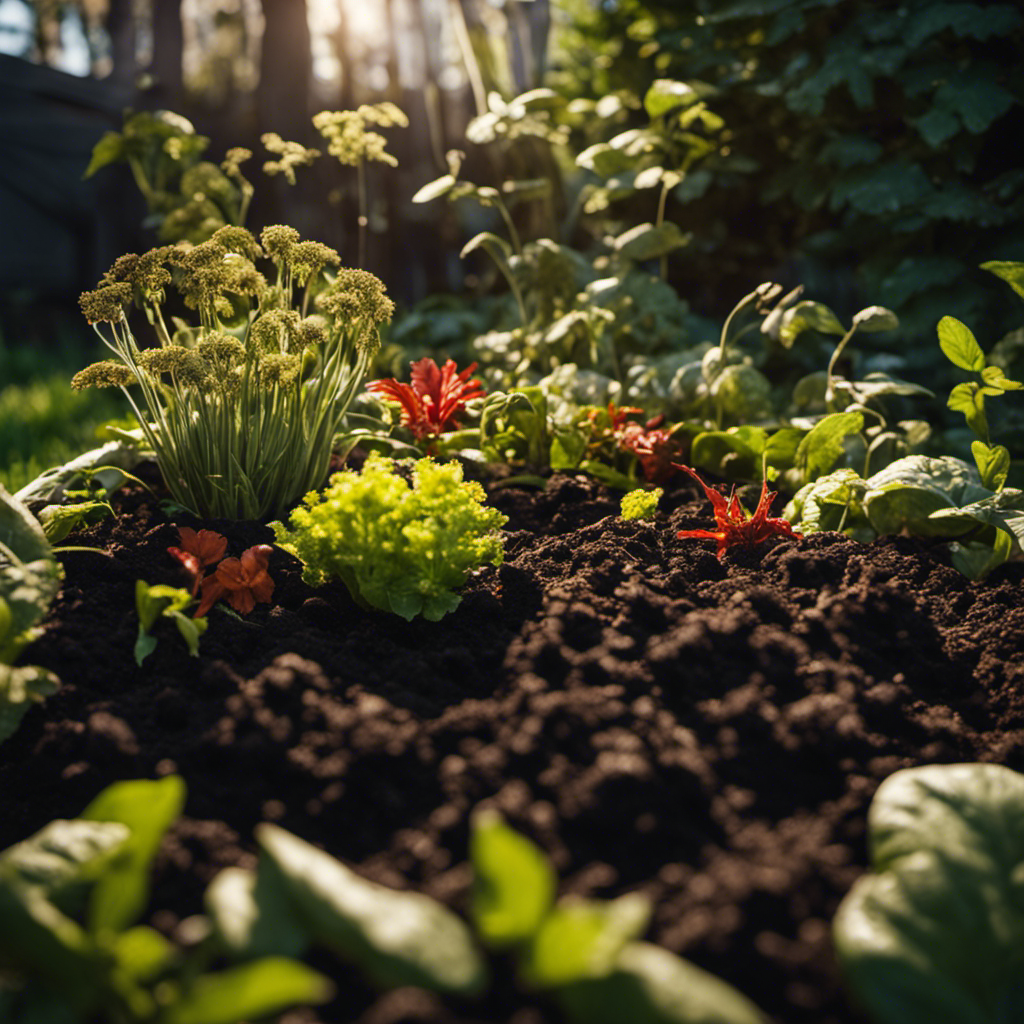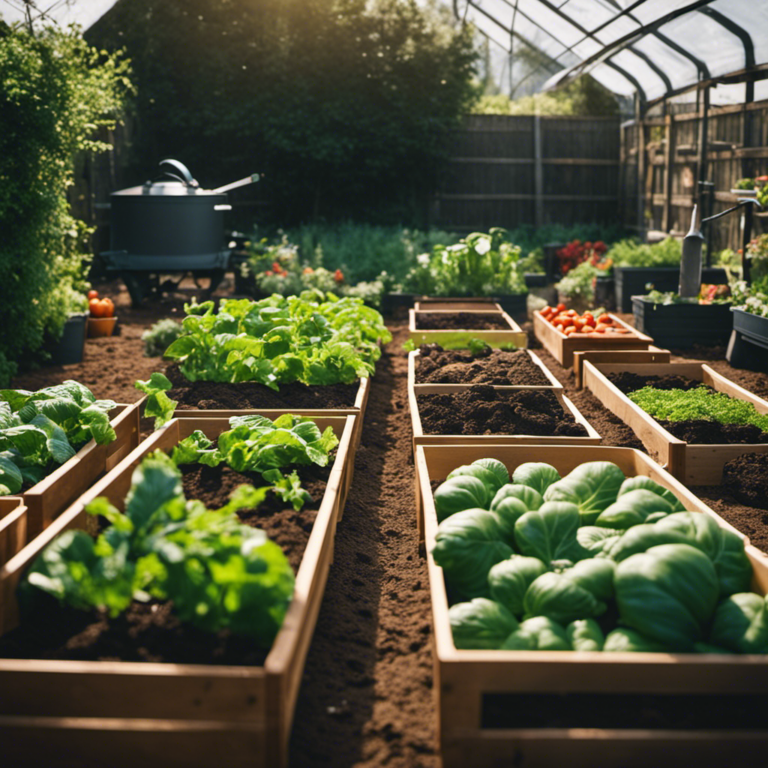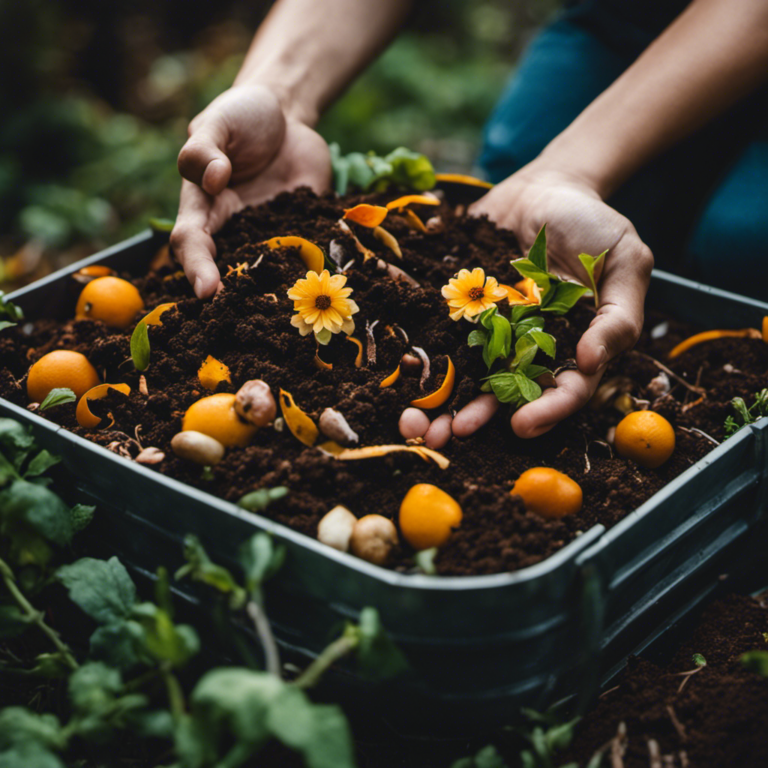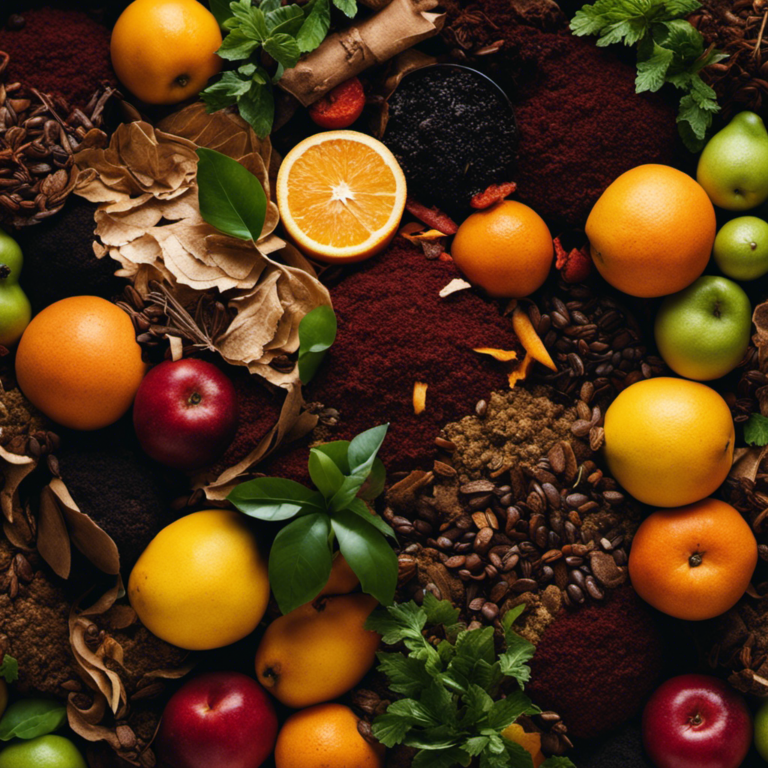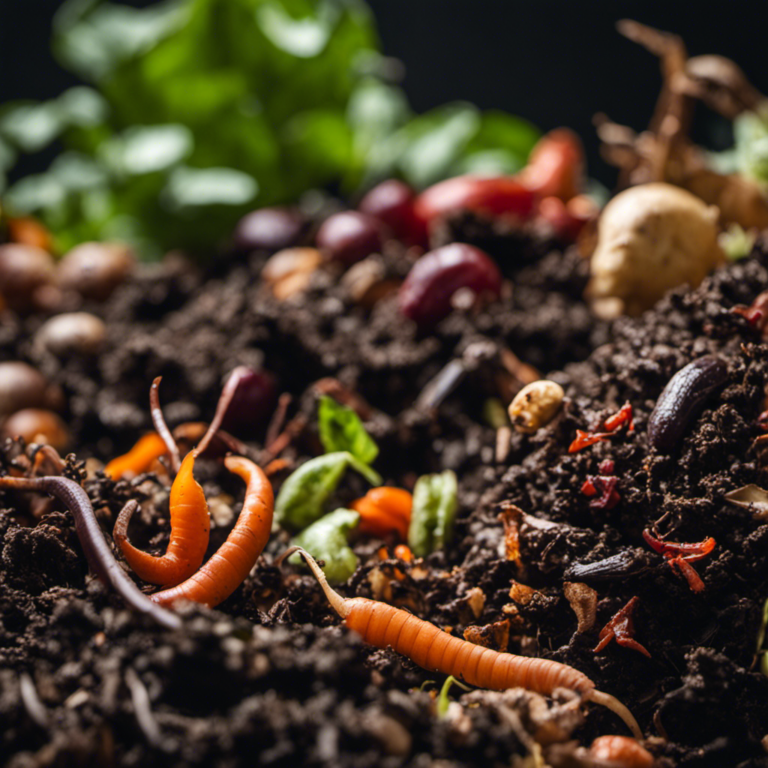I’ve always believed that turning waste into valuable resources is a smart and sustainable practice. If you’re interested in effective composting techniques, you’re in the right place.
In this article, I’ll share practical methods that will help you transform kitchen scraps into nutrient-rich soil for your garden. We’ll explore traditional composting methods, as well as worm composting and hot composting.
Get ready to discover the secrets of composting and unleash the potential of your waste.
Key Takeaways
Uncovering the Secrets of Effective Composting Techniques
Composting is a practical and effective method to reduce waste and enhance soil quality. There are different techniques to choose from, including traditional composting, vermicomposting with worms, bokashi composting with fermentation, or hot composting for faster results.
All of these methods can help you create nutrient-rich compost for your garden. By composting kitchen scraps, you not only decrease food waste but also contribute to a greener and more sustainable environment.
Start composting today and witness the positive impact it can have on your garden and the planet.
Traditional Composting Methods
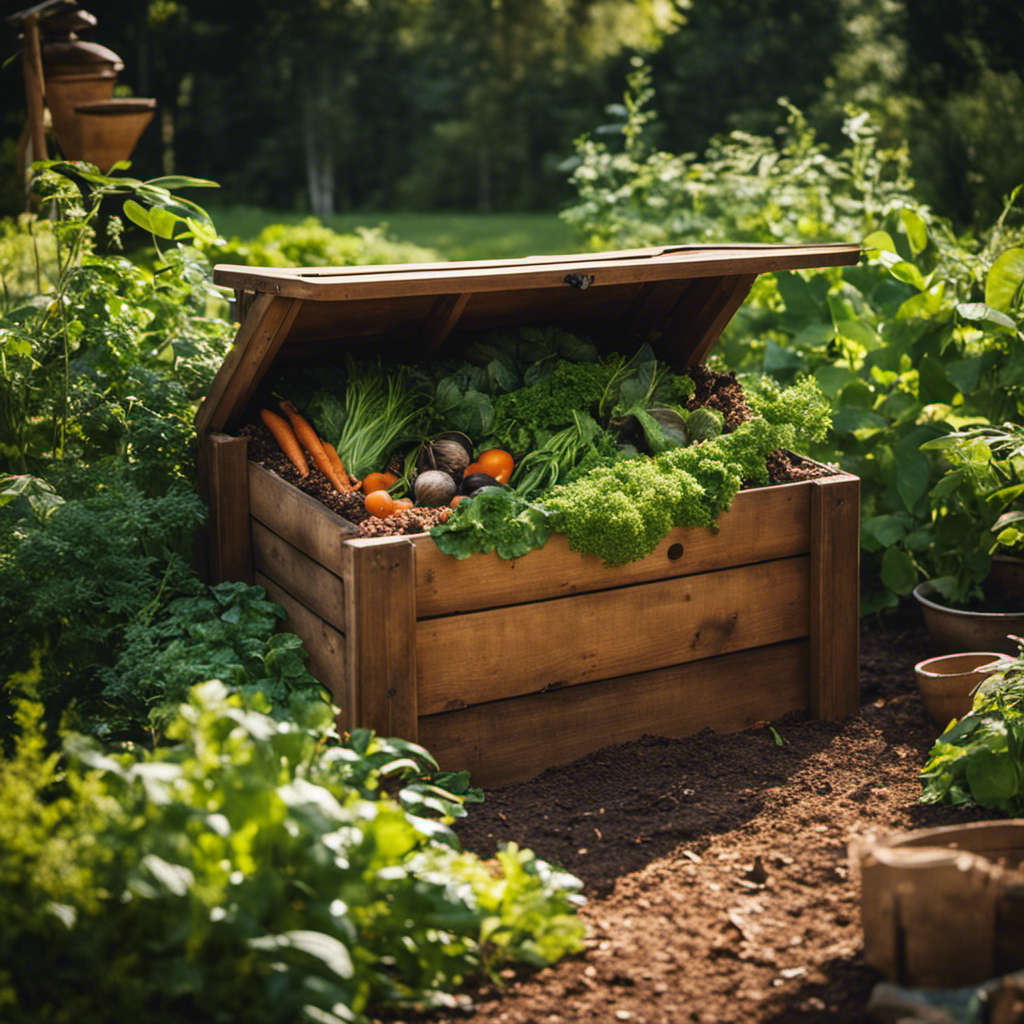
Traditional Composting Methods
In my experience and research, I’ve discovered that successful traditional composting relies on finding the right balance between organic matter and oxygen.
Traditional composting is a simple and effective way to transform kitchen scraps and yard waste into nutrient-rich soil for your garden. The benefits of composting are numerous. It reduces landfill waste, enriches and improves soil quality, and decreases the need for chemical fertilizers.
However, sometimes things don’t go as planned, and troubleshooting becomes necessary. One common issue is a compost pile that emits unpleasant odors. This can usually be attributed to an imbalance of organic matter and oxygen. To address this, simply use a pitchfork to turn the pile and introduce more oxygen.
Another common problem is a compost pile that doesn’t decompose properly. This could be due to insufficient moisture or an imbalance of carbon and nitrogen. Adding water or more organic matter can help resolve this issue.
Vermicomposting: Using Worms for Composting
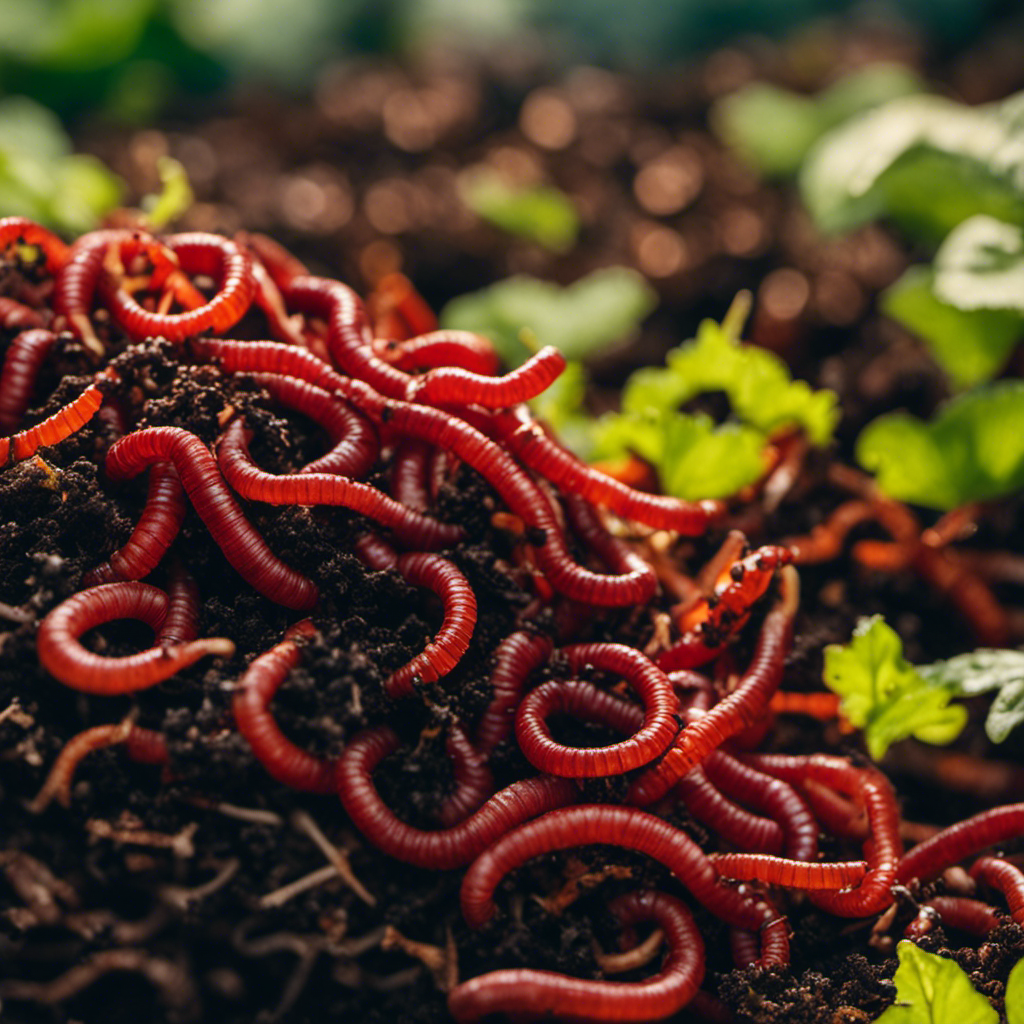
Vermicomposting: Using Worms for Composting
Vermicomposting utilizes the natural abilities of worms to break down organic waste and produce nutrient-rich soil. It’s an environmentally friendly and sustainable method that can be easily implemented in any home or garden. If you’re interested in starting your own vermicomposting system, here are some important tips to keep in mind:
-
Worm Selection: Opt for red worms (Eisenia fetida) or red wigglers as they’re highly efficient composters. Avoid using earthworms or nightcrawlers as they prefer living in soil rather than decomposing organic waste.
-
Bin Selection: Use a shallow container or a specialized worm bin with proper drainage holes to provide a suitable habitat for the worms. Ensure that the bin is well-ventilated to prevent unpleasant odors.
-
Bedding Material: Create a comfortable bedding for the worms using shredded newspaper, cardboard, or coconut coir. Keep the bedding moist, but be careful not to make it too wet, as it can harm the worms.
-
Feeding the Worms: Add kitchen scraps, fruit and vegetable peels, coffee grounds, and tea bags to the worm bin. Avoid adding meat, dairy products, oily or greasy foods, as they can attract pests or emit foul odors.
-
Maintenance Tips: Regularly check the moisture level of the bedding and add water if necessary. Avoid overfeeding the worms and bury the food scraps under the bedding to prevent fruit flies. When the compost is ready, move the worms to one side of the bin and collect the dark, crumbly compost from the other side.
Bokashi Composting: Fermentation for Nutrient-Rich Compost
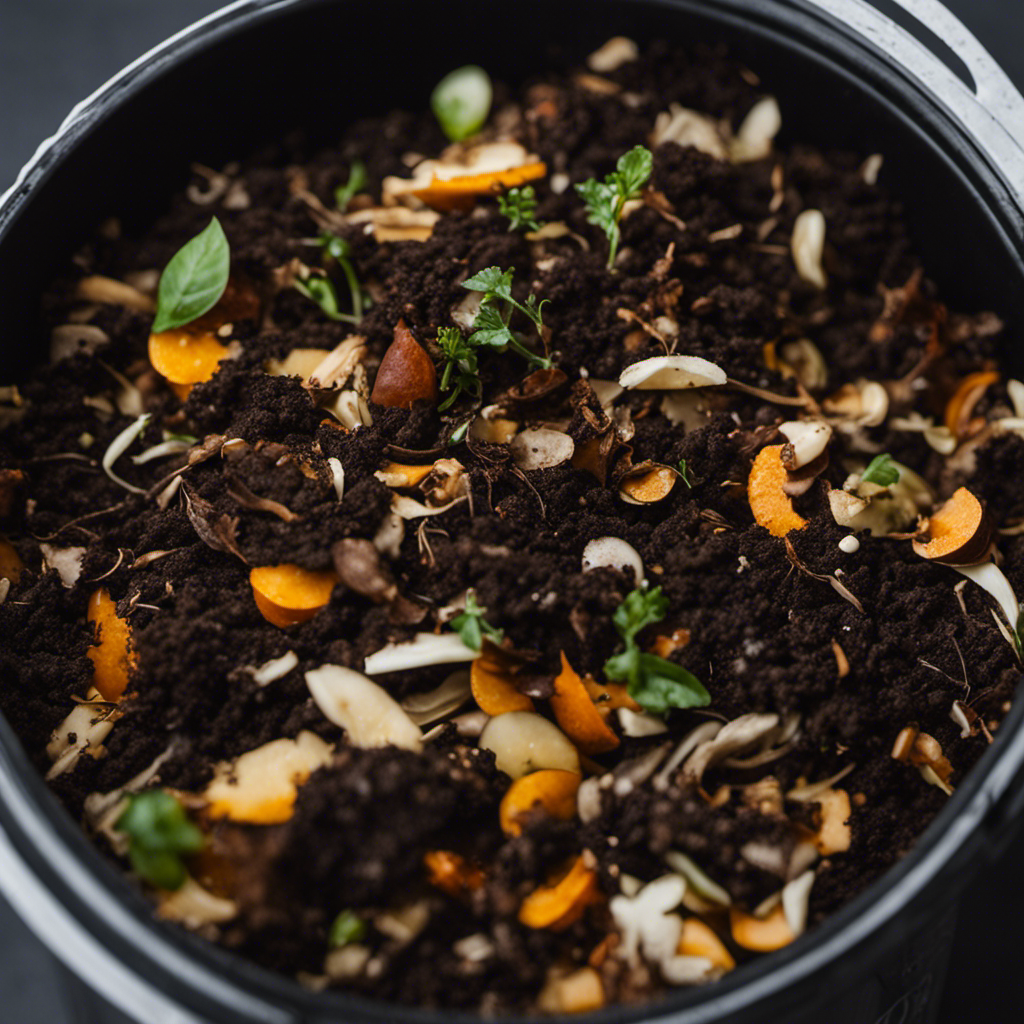
Continuing from the previous subtopic, let’s explore another effective composting technique known as bokashi composting, which utilizes fermentation to produce nutrient-rich compost.
Bokashi composting is a process that involves fermenting organic waste using specialized microorganisms. This method is efficient and allows for the composting of a wider range of materials, including meat, dairy, and cooked foods, which are typically avoided in traditional composting methods.
The process of bokashi composting begins by layering the organic waste in an airtight container, such as a bucket or bin. Then, a bokashi bran, containing beneficial microorganisms, is sprinkled over each layer. These microorganisms, mainly lactobacilli and yeasts, ferment the waste, breaking it down into a nutrient-rich mixture.
One of the main benefits of bokashi composting is its ability to ferment waste quickly, typically within two weeks. The fermentation process helps suppress odors and discourage pests, making it an ideal option for those living in urban areas or with limited outdoor space. Additionally, the resulting compost is high in nutrients and beneficial microorganisms, which can enhance soil health and promote plant growth.
To utilize the nutrient-rich bokashi compost, it can be buried directly in the garden or added to a traditional compost pile. It’s important to allow the fermented waste to complete the composting process by allowing it to break down further through microbial activity. This will ensure that the nutrients are fully available for plants to absorb.
Hot Composting: Speeding up the Decomposition Process
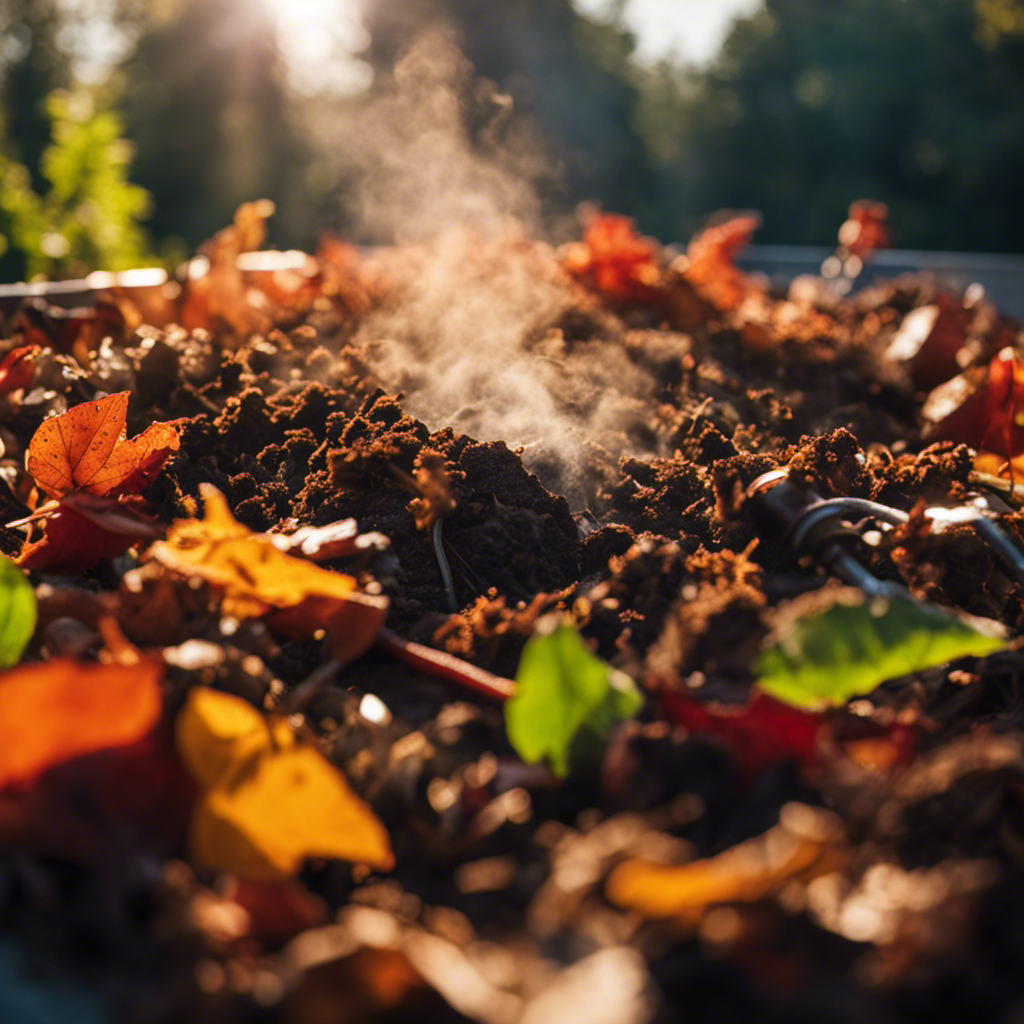
Hot composting is a technique that speeds up the decomposition process by using high temperatures. It’s a practical method for those who want to accelerate composting and obtain nutrient-rich compost more quickly. Here are some important points to consider when practicing hot composting:
-
Aerobic decomposition: Hot composting relies on the presence of oxygen to effectively break down organic matter. Turning the compost pile regularly ensures proper airflow and promotes aerobic decomposition.
-
Carbon nitrogen ratio: Maintaining the correct balance of carbon to nitrogen is crucial for successful hot composting. A balanced ratio of approximately 30:1 (carbon to nitrogen) creates optimal conditions for microbial activity and heat generation.
-
High temperatures: Hot composting requires temperatures ranging from 120°F to 160°F (49°C to 71°C). These elevated temperatures help eliminate weed seeds, pathogens, and harmful bacteria, resulting in safe and nutrient-rich compost.
-
Insulation: Insulating the compost pile is essential to maintain the high temperatures necessary for hot composting. Materials like straw, hay, or leaves can be used as insulation to trap heat within the pile.
-
Moisture control: Adequate moisture is vital for hot composting. The compost pile should be damp, similar to a wrung-out sponge. Regularly monitoring moisture levels and adding water as needed ensures optimal conditions for the decomposition process.
Composting With Kitchen Scraps: Reducing Food Waste and Enriching Soil
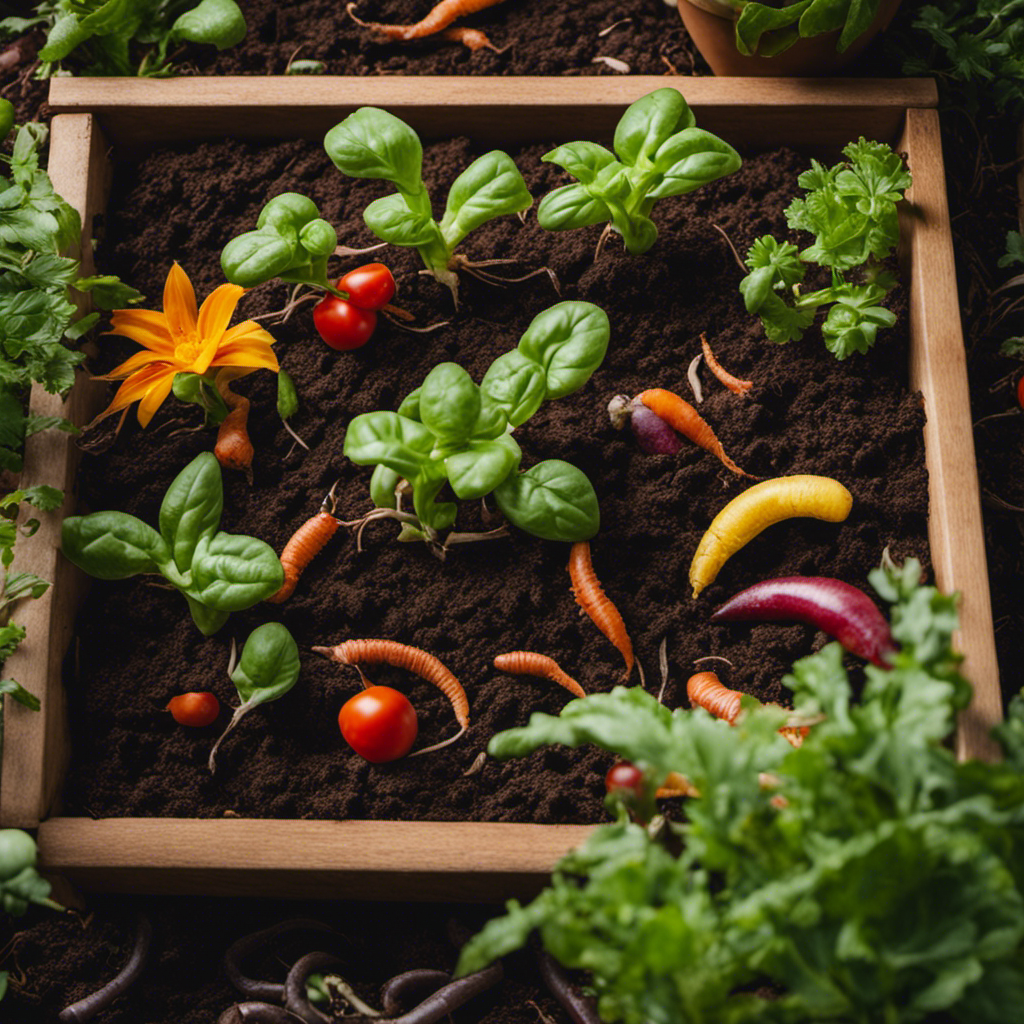
Composting with kitchen scraps is a practical and eco-friendly way to reduce food waste and improve soil quality. Instead of throwing away fruit and vegetable peels, coffee grounds, eggshells, and tea bags, you can repurpose them in your compost pile. These kitchen scraps are considered ‘green’ materials because they’re rich in nitrogen, which is essential for the decomposition process. By combining them with ‘brown’ materials like dried leaves or straw, which are high in carbon, you can create a more efficient composting process.
To effectively compost kitchen scraps, it’s important to chop or shred them into smaller pieces. This increases their surface area and helps them break down more quickly. It’s also crucial to maintain a proper balance of green and brown materials in your compost pile. Aim for a ratio of approximately one part green materials to three parts brown materials.
By composting kitchen scraps, you not only divert waste from landfills but also create a valuable resource for your garden. The composted material enriches the soil with nutrients, enhances its structure, and improves moisture retention. This organic matter promotes healthy plant growth, reduces the need for chemical fertilizers, and encourages sustainable gardening practices.
Conclusion
Composting is a practical and effective way to reduce waste and improve soil quality. There are various techniques you can choose from, such as traditional composting, vermicomposting with worms, bokashi composting with fermentation, or hot composting to speed up the process.
All of these methods can help you create nutrient-rich compost for your garden. By composting kitchen scraps, you not only reduce food waste but also contribute to a greener and more sustainable environment.
Start composting today and see the positive impact it can have on your garden and the planet.
